[Computer Networking] {CMU14-740} Lecture 8: Queueing Theory
In order to analyze and debug networks, we often have to use tools that are mathematical in nature. This lecture will give you a basic understanding of queueing theory. You will learn basic characteristics of queueing systems, parameters to mathematically describe the system and the mathematical tools to analyze other factors (like waiting time, number of objects in the system, etc) based on those parameters. This is the most mathematically intense lecture of the semester.

Queueing theory describes systems where objects wait for service in an orderly fashion
Lesson Objectives
By the end of this lesson, the student will be able to:
- describe the application of queuing theory to common networking problems.
- calculate simple queueing theory problems, including use of Little's law, M/M/1 and M/M/c measures of effectiveness. In such cases, all equations will be given.
- not memorize queueing theory equations.
- classify problems in terms of queueing system characteristics and know Kendall53 notation for those systems.
Outline
- Queueing Theory Overview
- Performance Evaluation - "Little's Law"
- Rate Transition Diagrams
- M/M/1 Systems
- M/M/c Systems
- Examples
Slides
Video
Other Resources
- Fundamentals of Queueing Theory, by Gross et. al. (in E&S Library) [Amazon Link]
- A somewhat math-heavy review of queueing theory by Adan and Resing [Queue.pdf]
- Answers to Lecture Example #1 [QT_LectureExample1.pdf]
- Answers to Lecture Example #2 [QT_LectureExample2.pdf]
- Answers to Lecture Example #3 [QT_LectureExample3.pdf]
- The QT equations available to you during the quiz [Quiz1_EquationSheet.pdf]

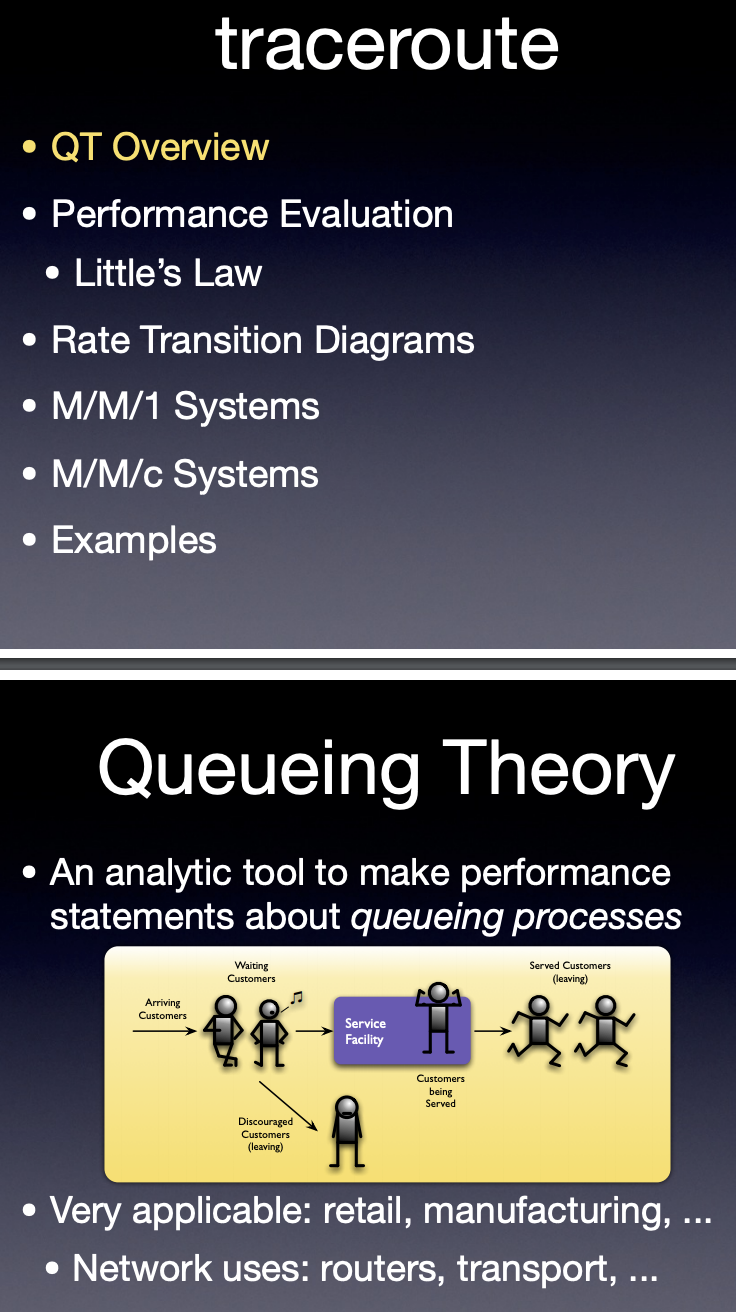
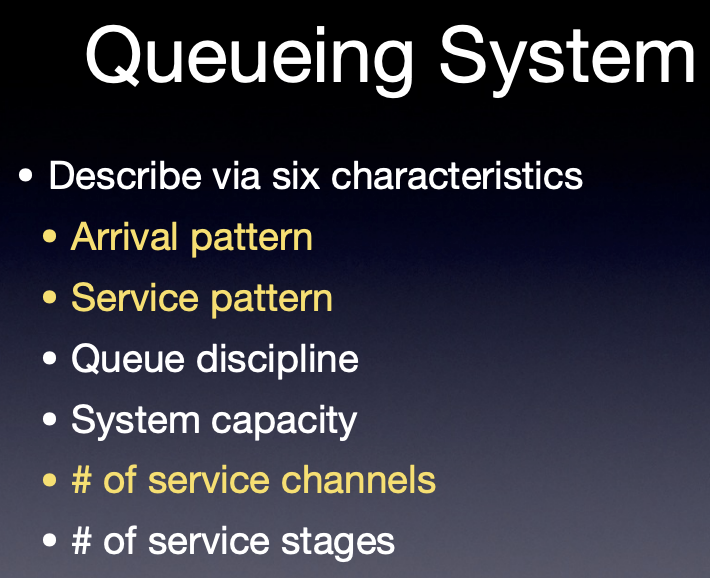
pdf => probability density funcion

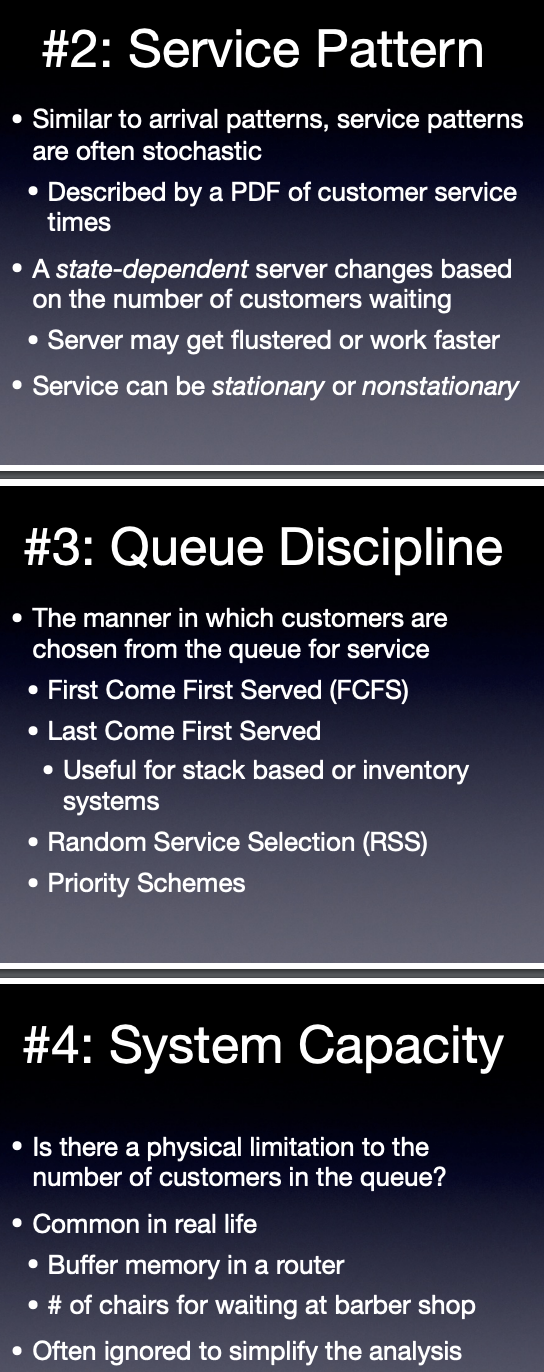
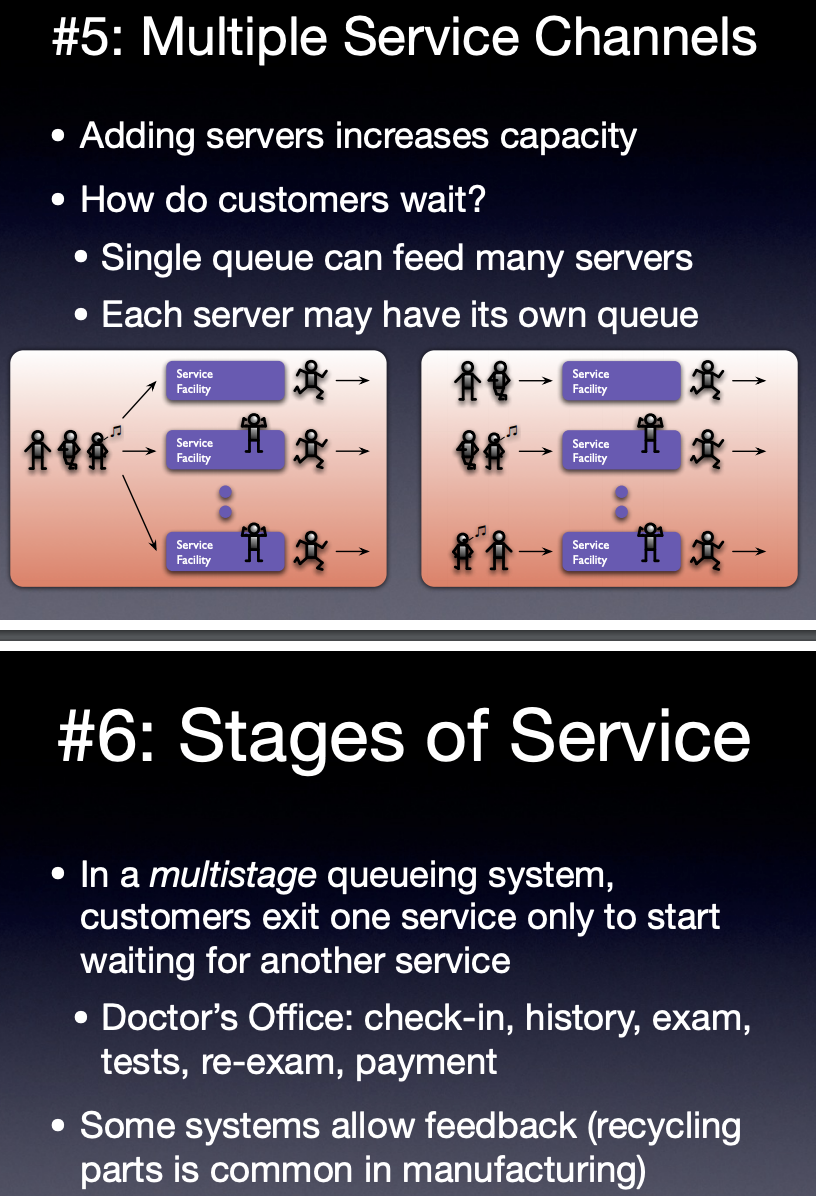

oftentimes, we leave Y and Z
here, we only talk about G(general => no assumption) and M (Markovian => indenpendent arrival time for the customs)
G includes M => can use G/G/1 to represent M/M/1
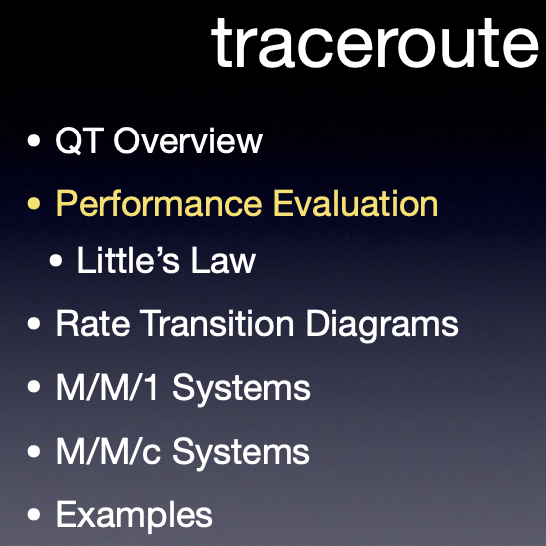
easily observable parameters
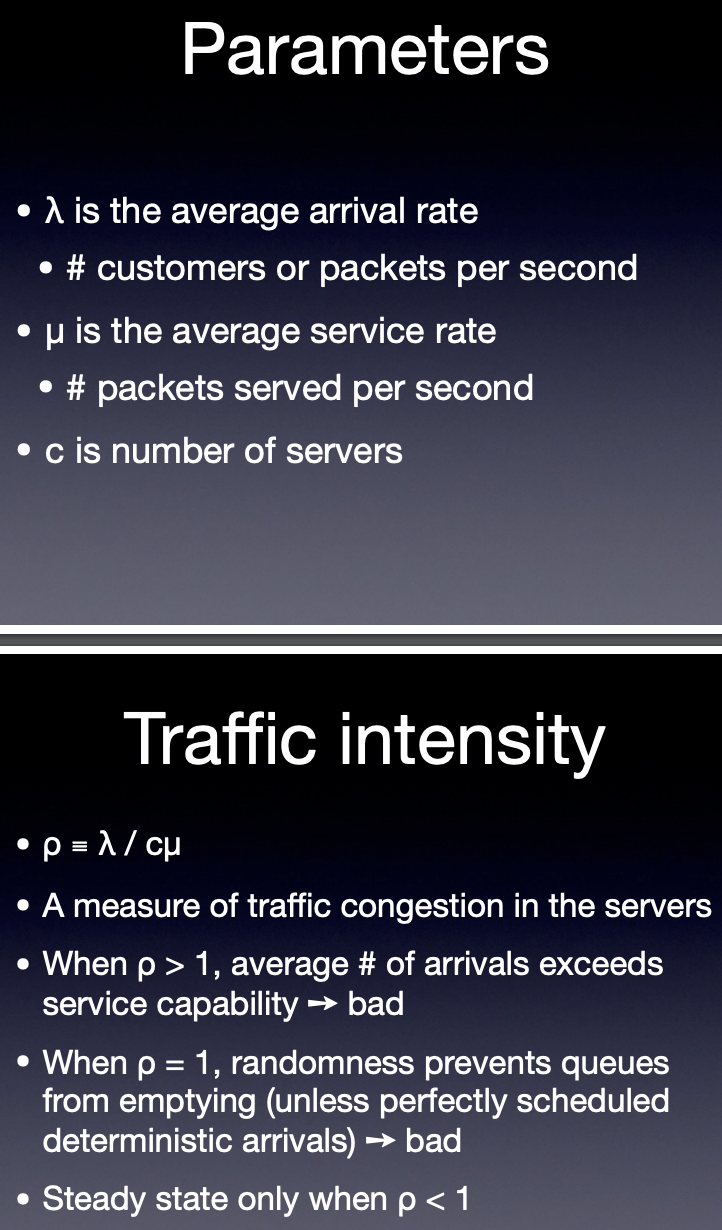


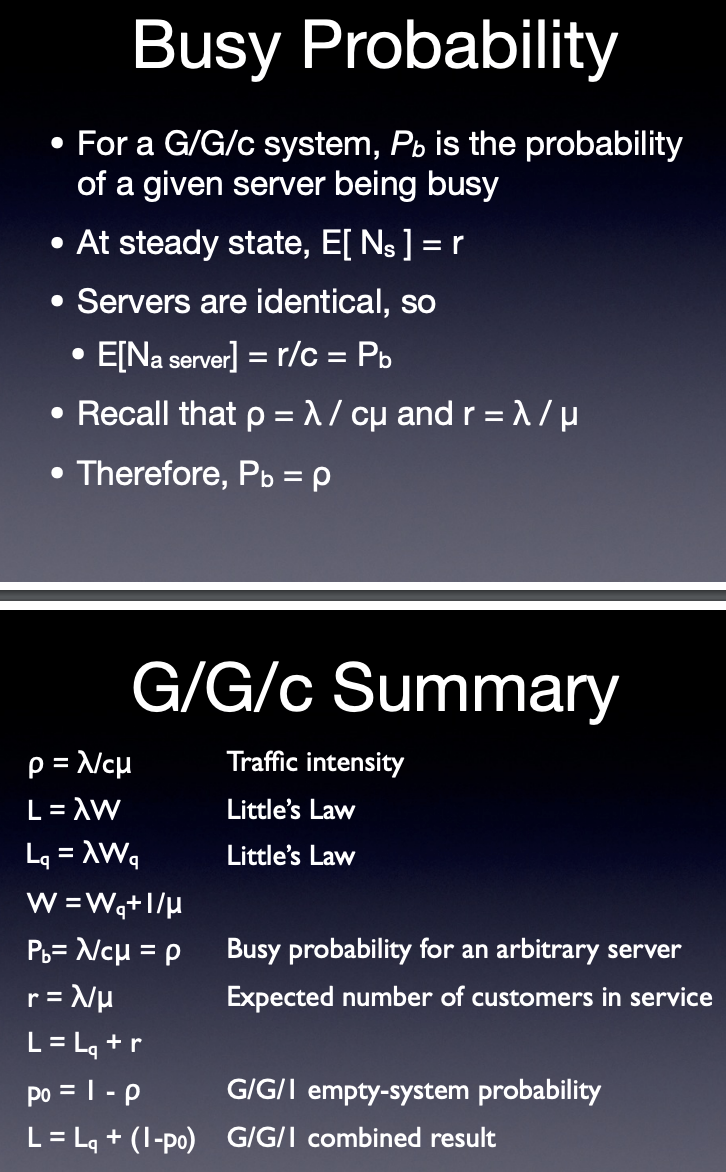
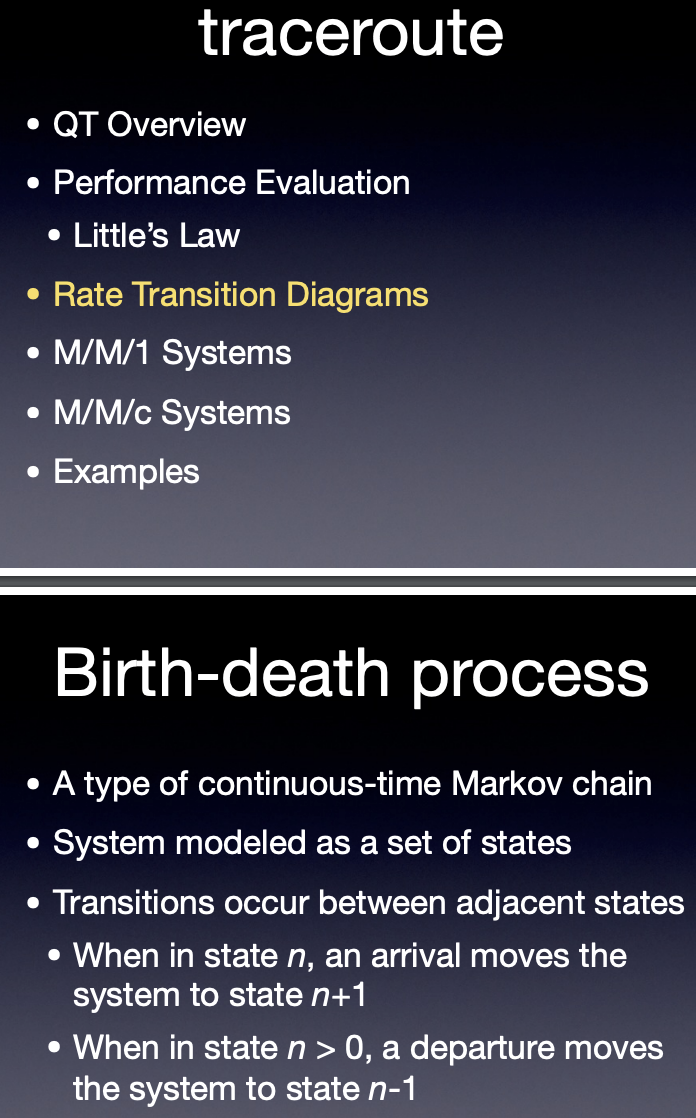
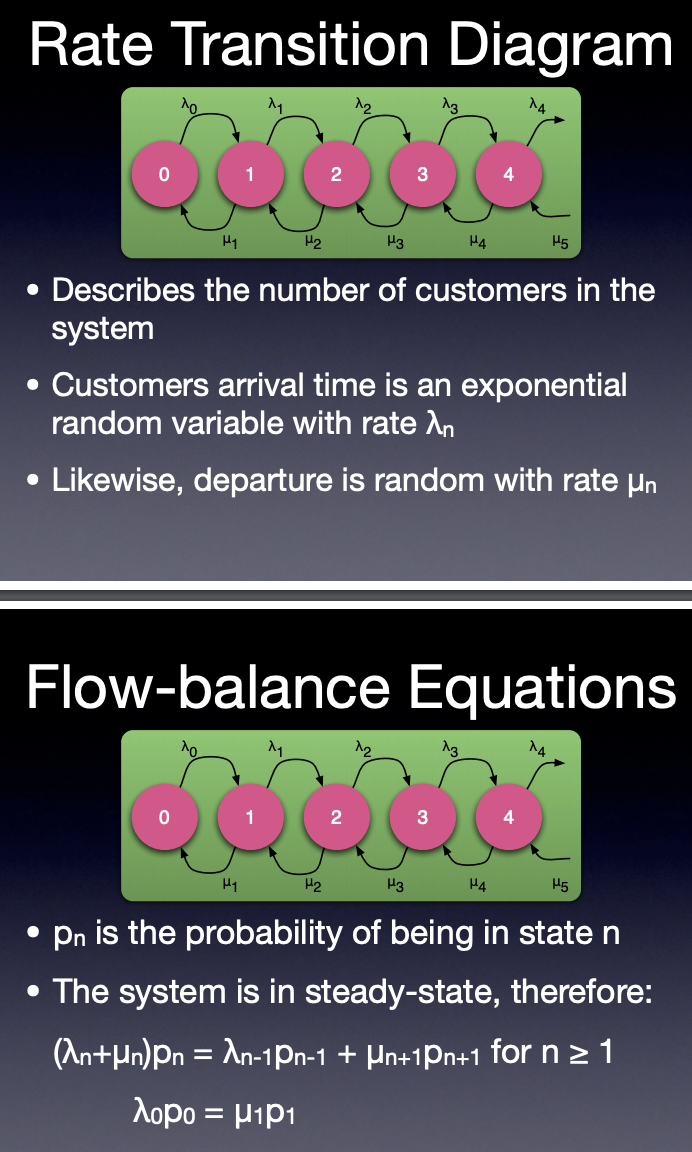
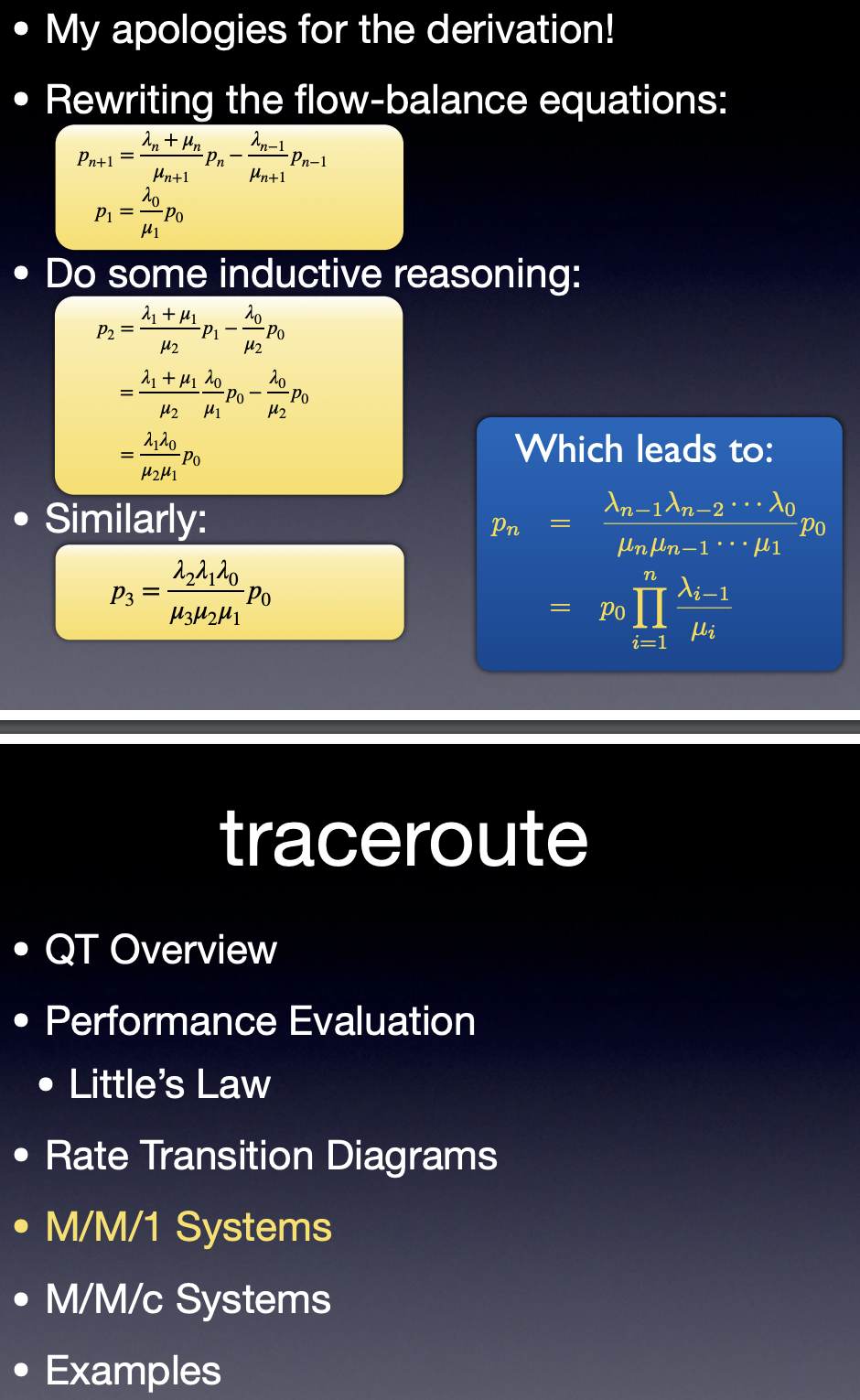
independent showing time of the adjacent customers
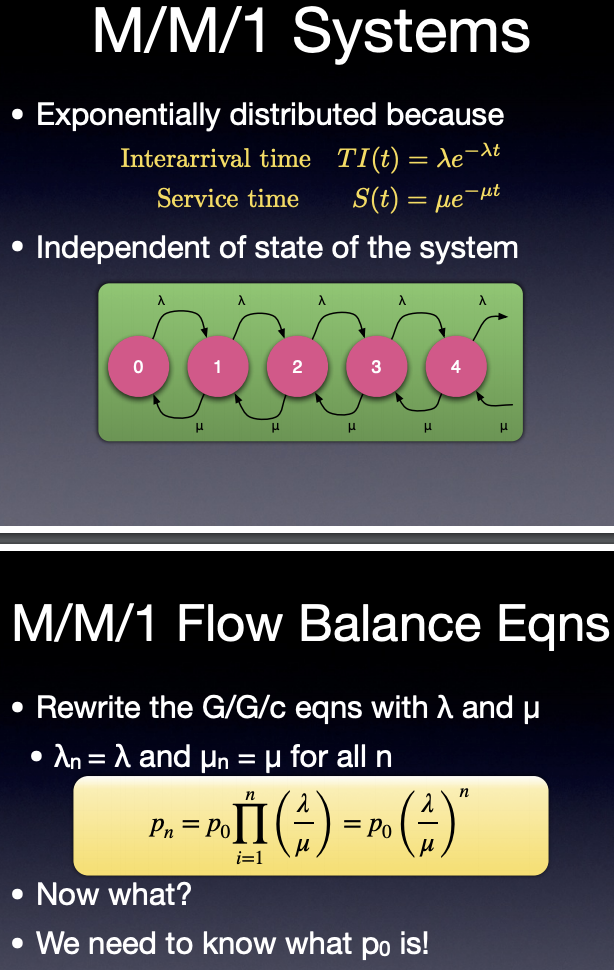
eq that we derived earlier
now the problem is to calculate p0
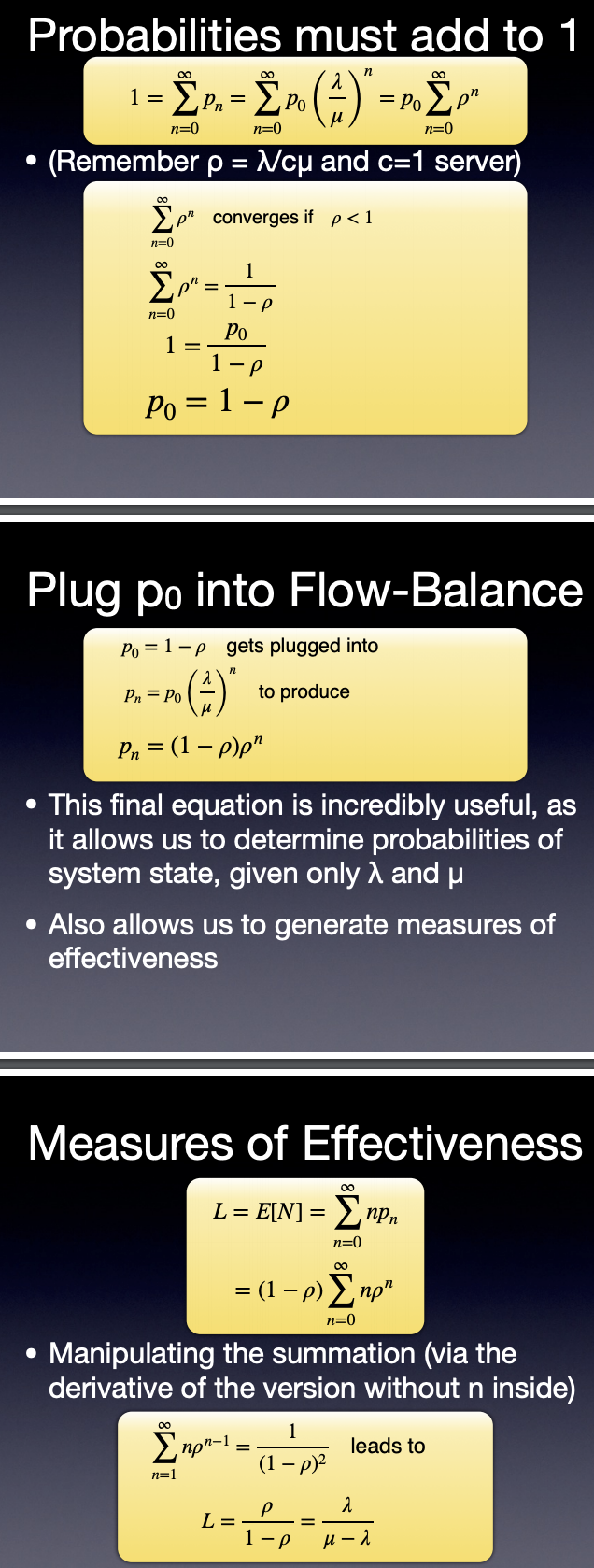

L => number of custom
W => average waiting time
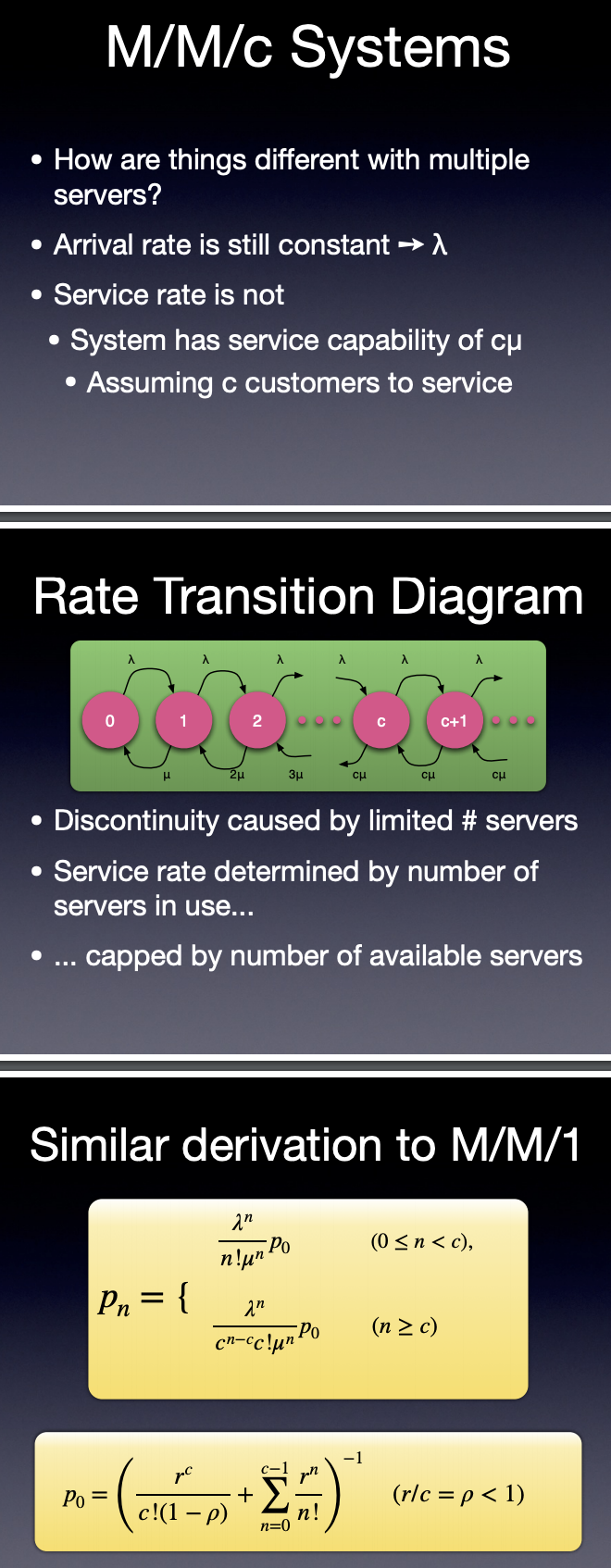
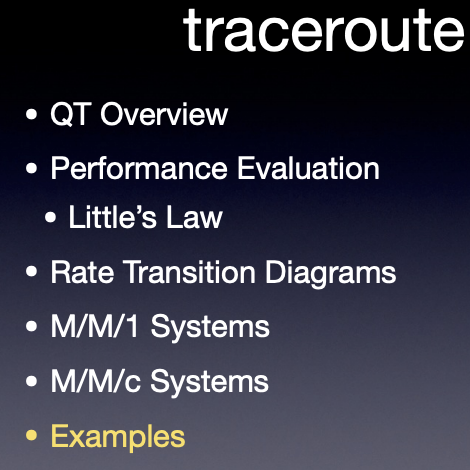
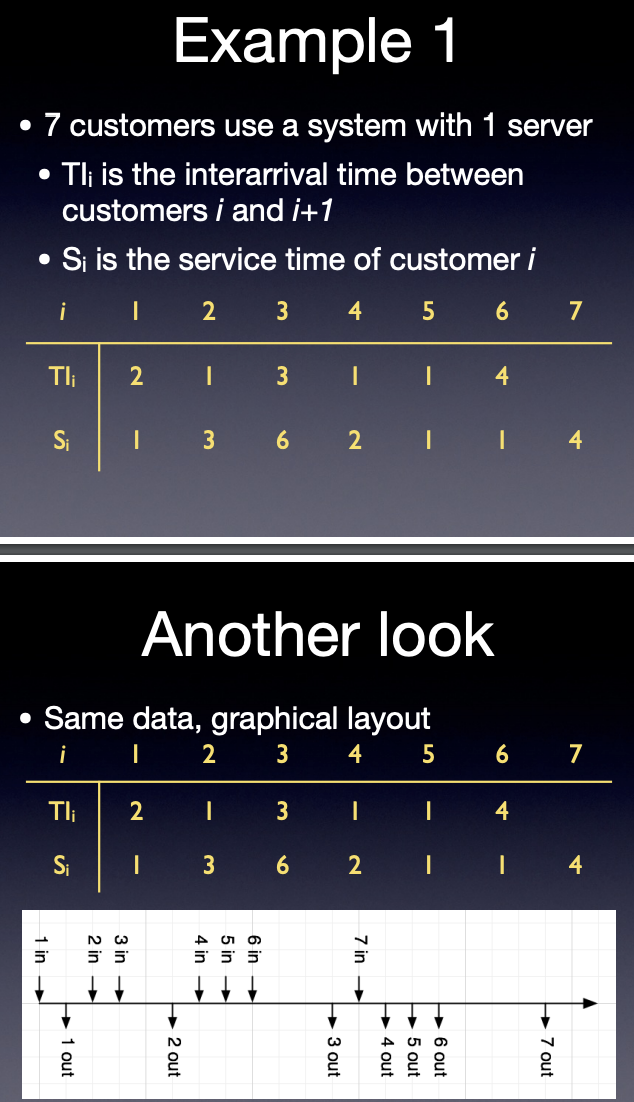
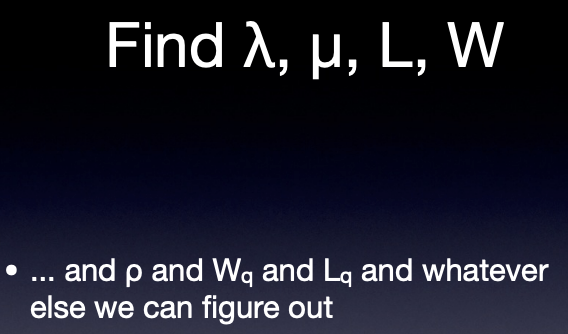
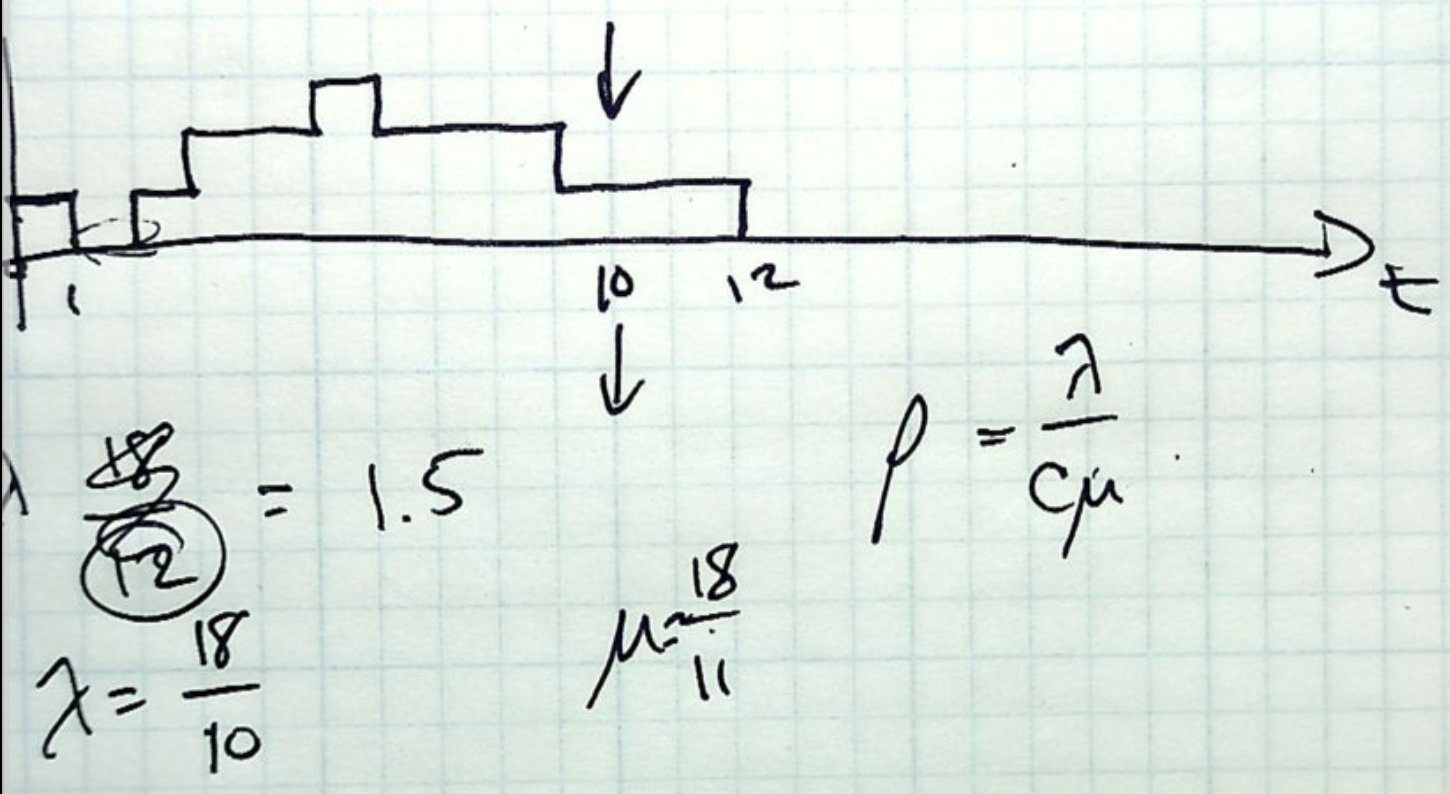
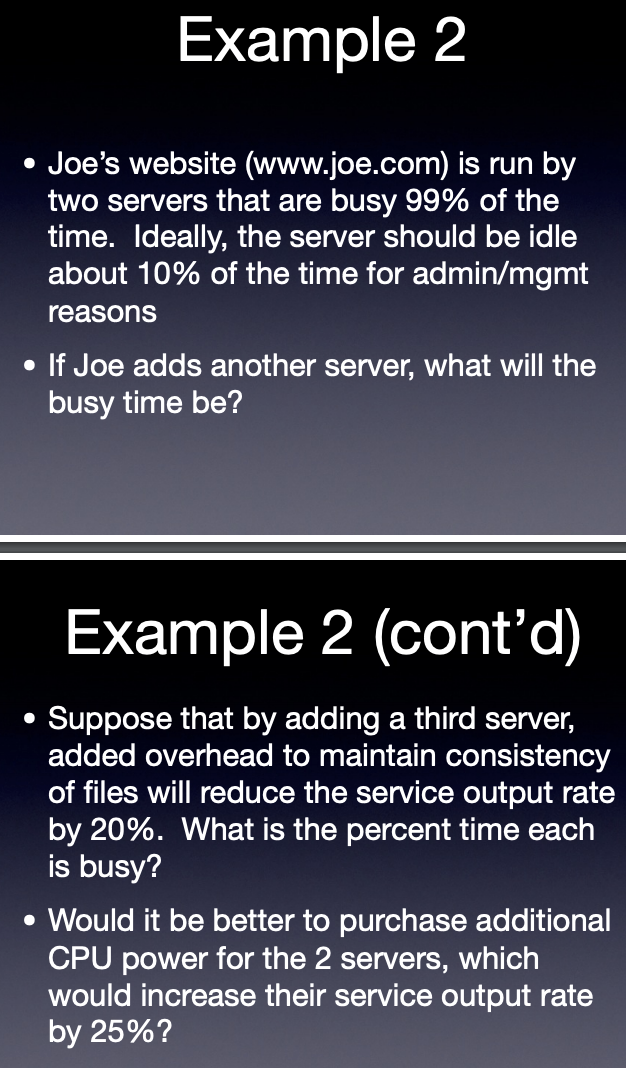




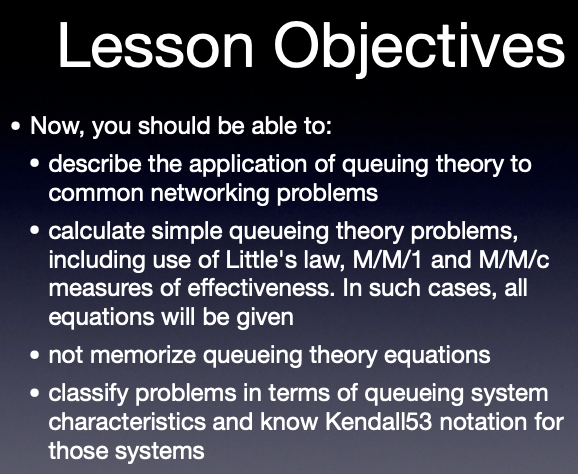





 浙公网安备 33010602011771号
浙公网安备 33010602011771号